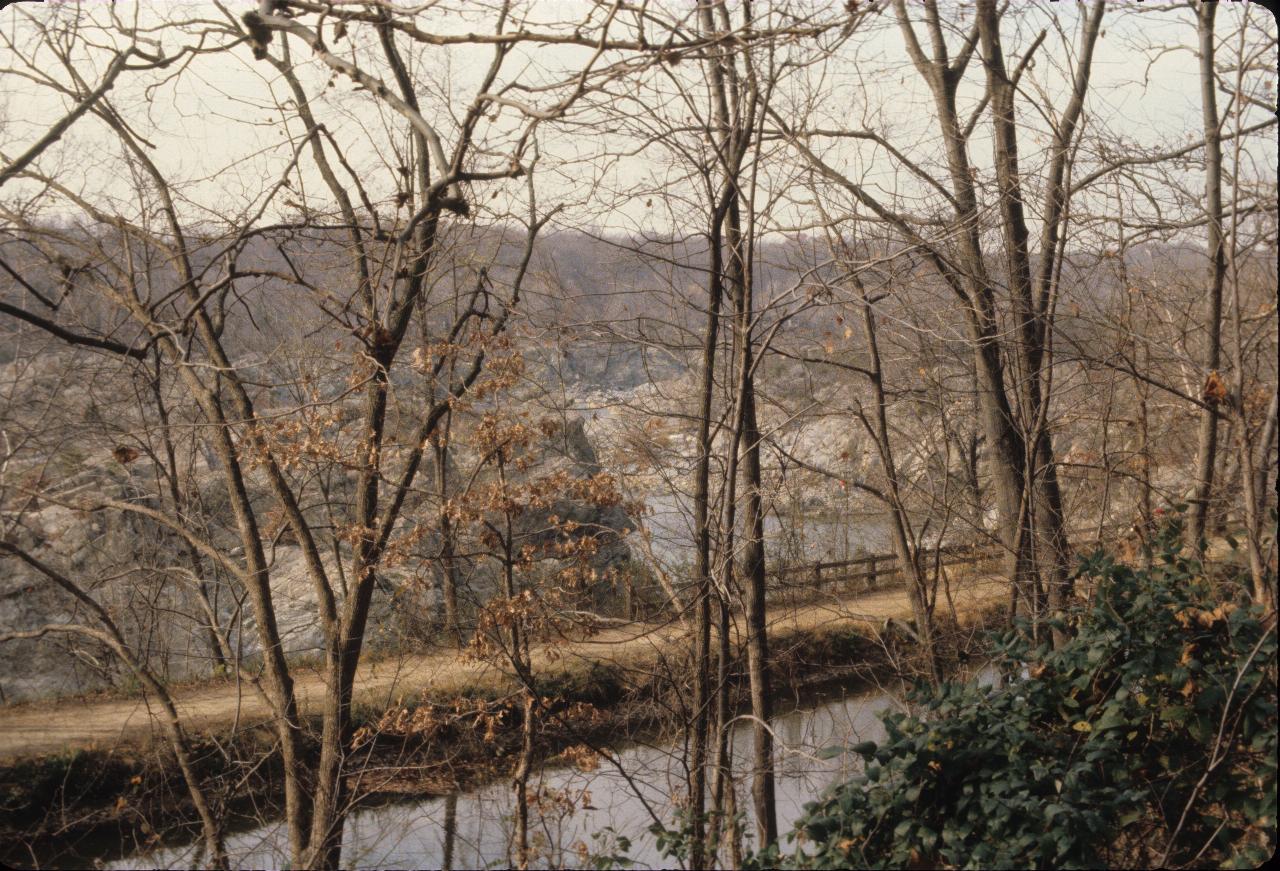
Today we headed north west of Washington, planning to reach Harpers Ferry.

The C & O canal, foreground, and the Potomac River, which it parallels,
in the background, and at lower level.
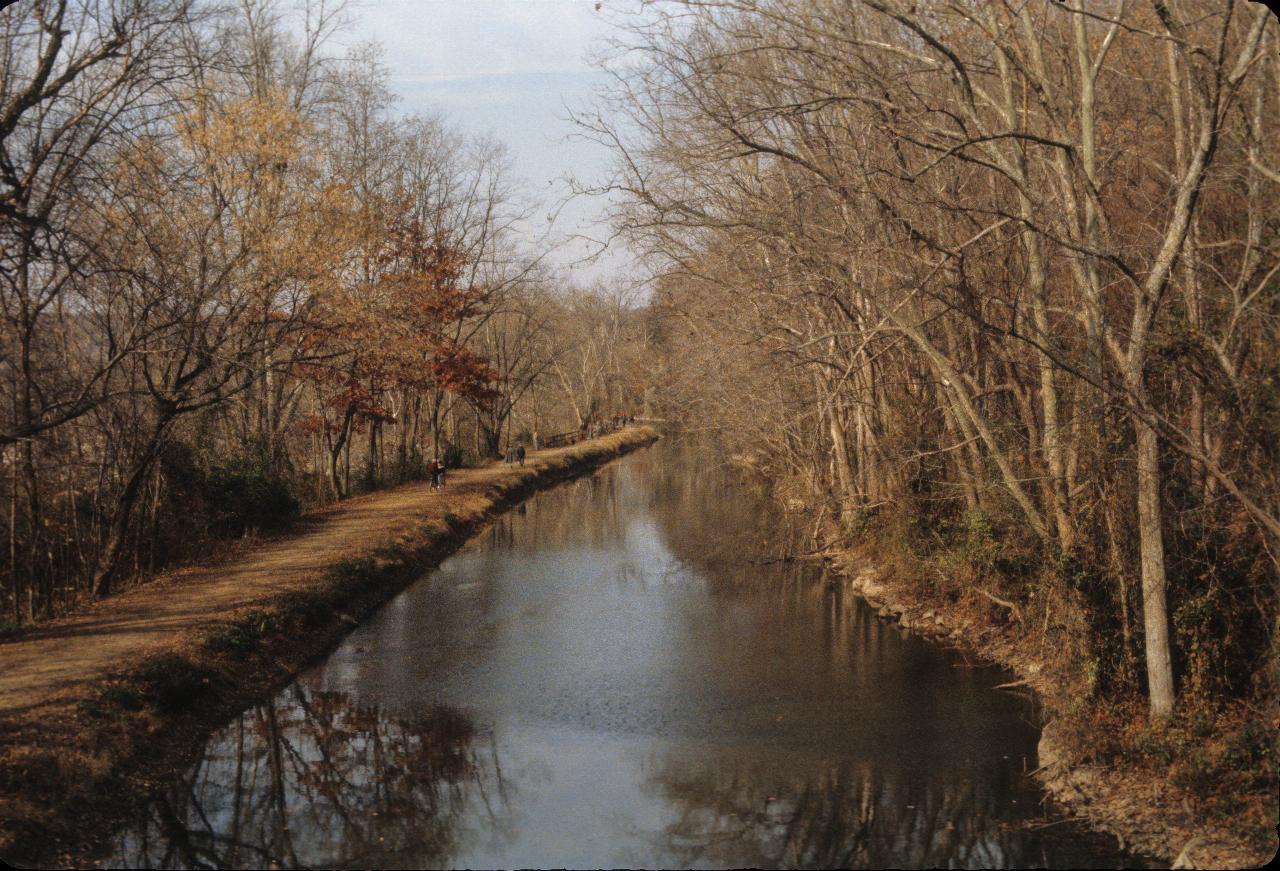
This section of the canal is in good repair, as it still contains water! The
path on the left is the towpath, which in the early days was used by mules or horses to
tow the barge along. The coming of the industrial age allowed motorised
barges, so the towpath was no longer used for that purpose.
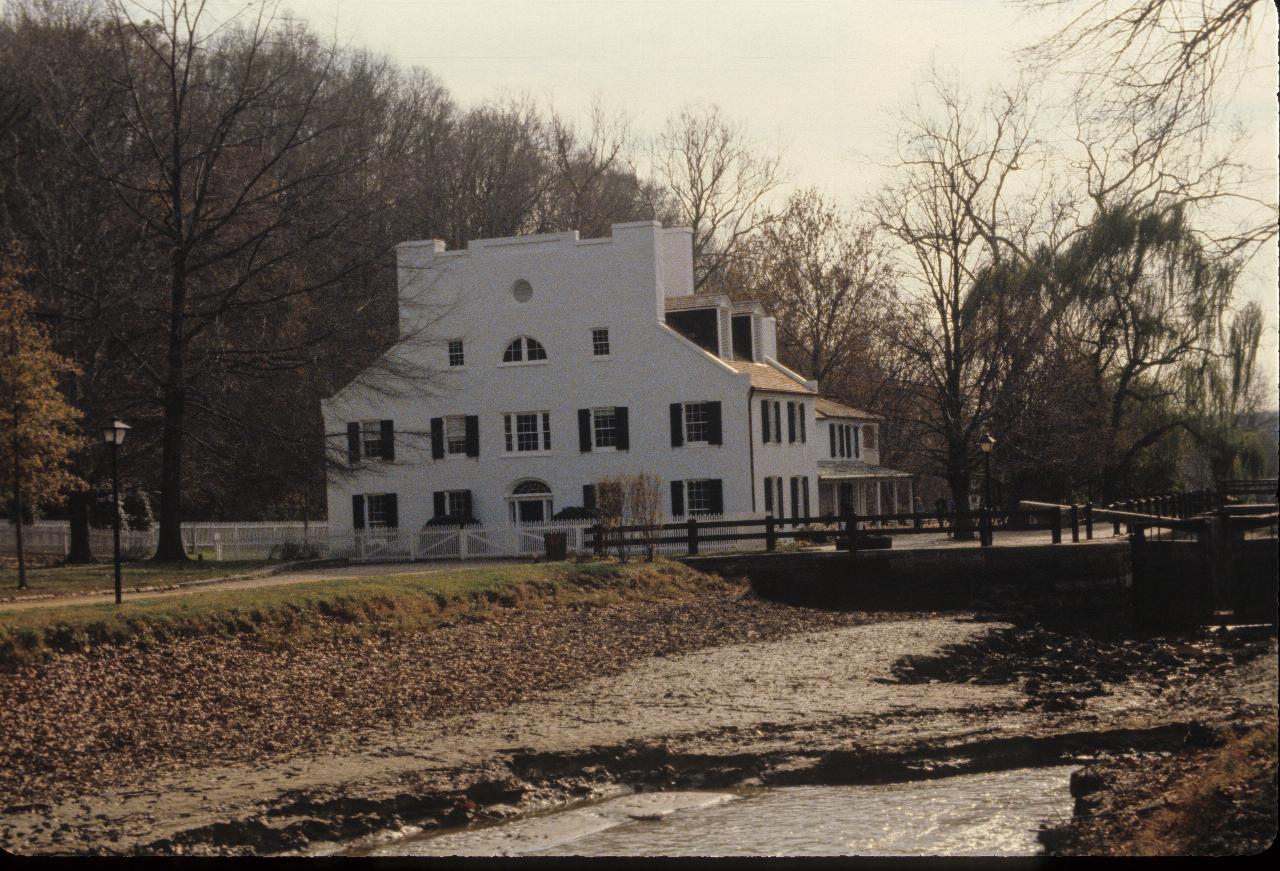
The C & O Canal lock-keepers house at Great Falls Tavern. Sometimes the loch
sequence is handled by barge crews, but a busy commercial canal would likely
have men on duty whenever required.
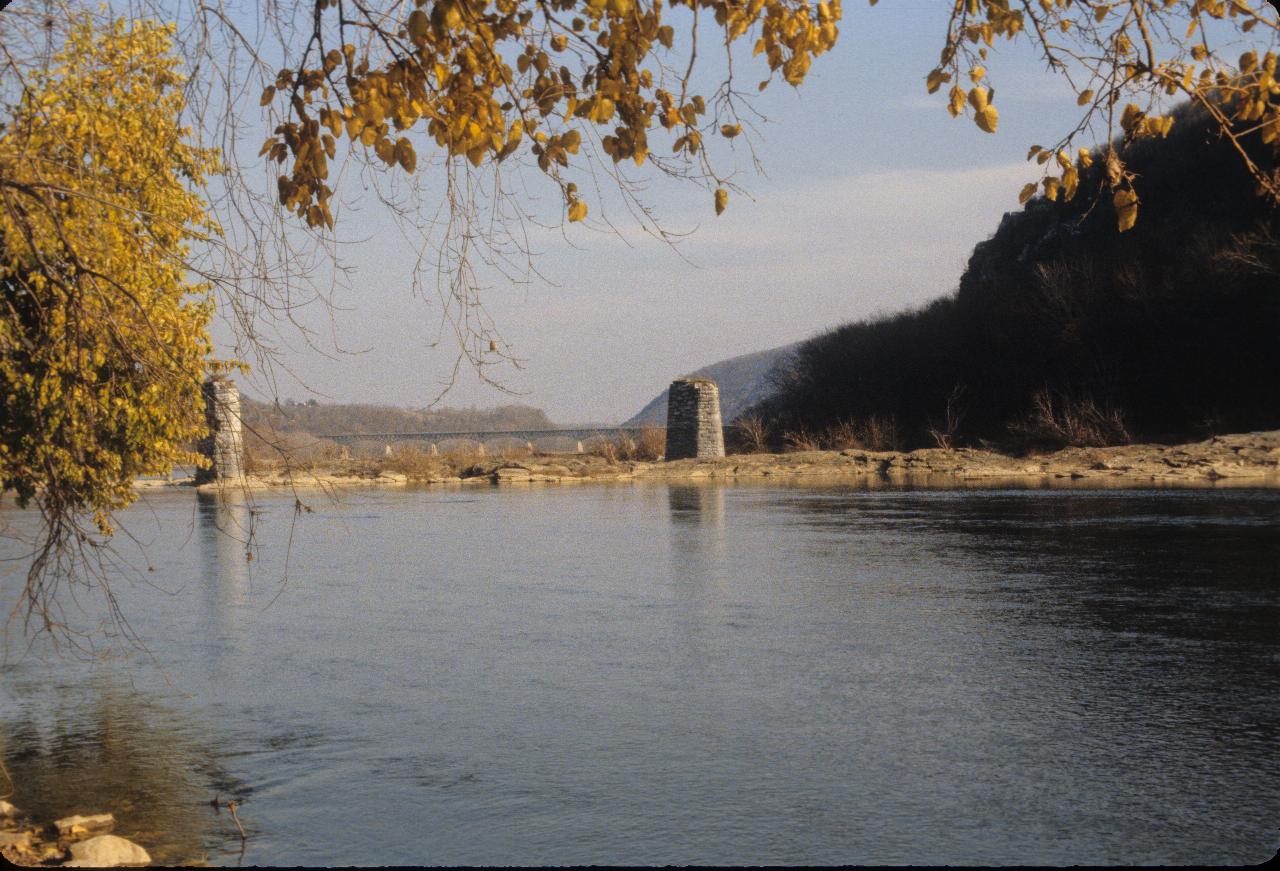
The pillars are from the bridge destroyed by a flood in 1924. New road bridges were
built up and down stream to replace them, but resulted in bypassing the town.
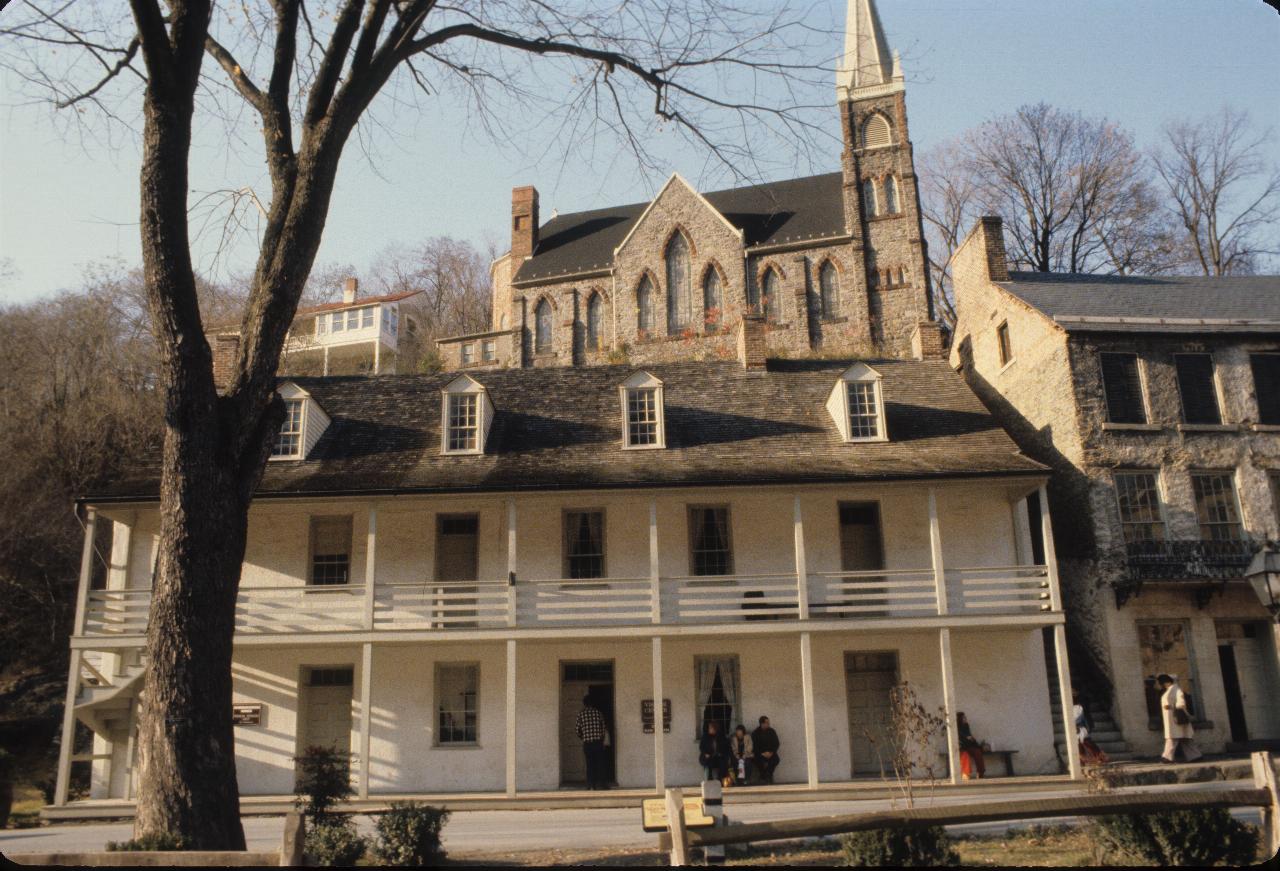
The lower building is the Visitor Center, with St. Peters Catholic Church behind it
up the hill.
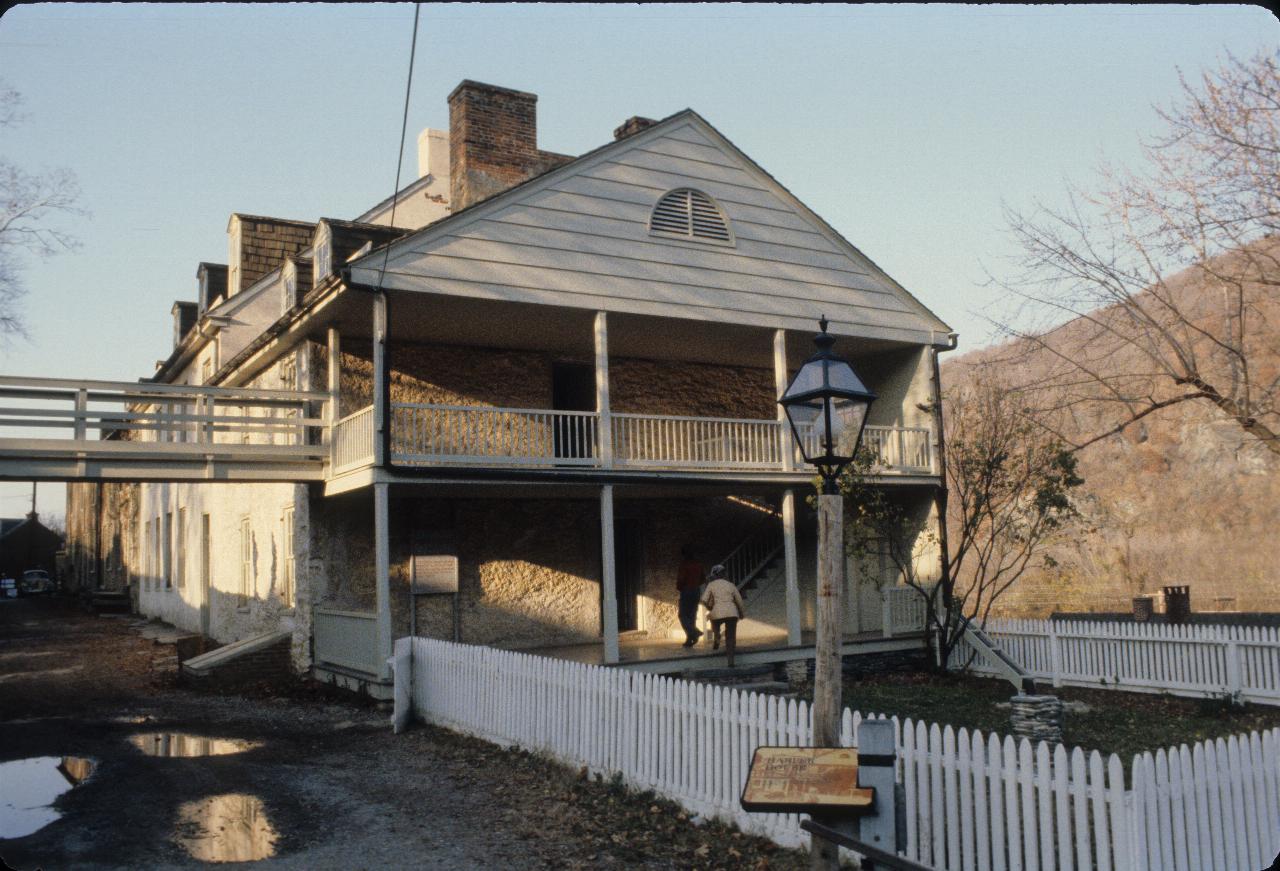
This is Harper's House, after whom the town was named. He started a ferry
service across the Potomac River in 1761, making the town a starting point
for settlers heading west into the Shenandoah Valley.
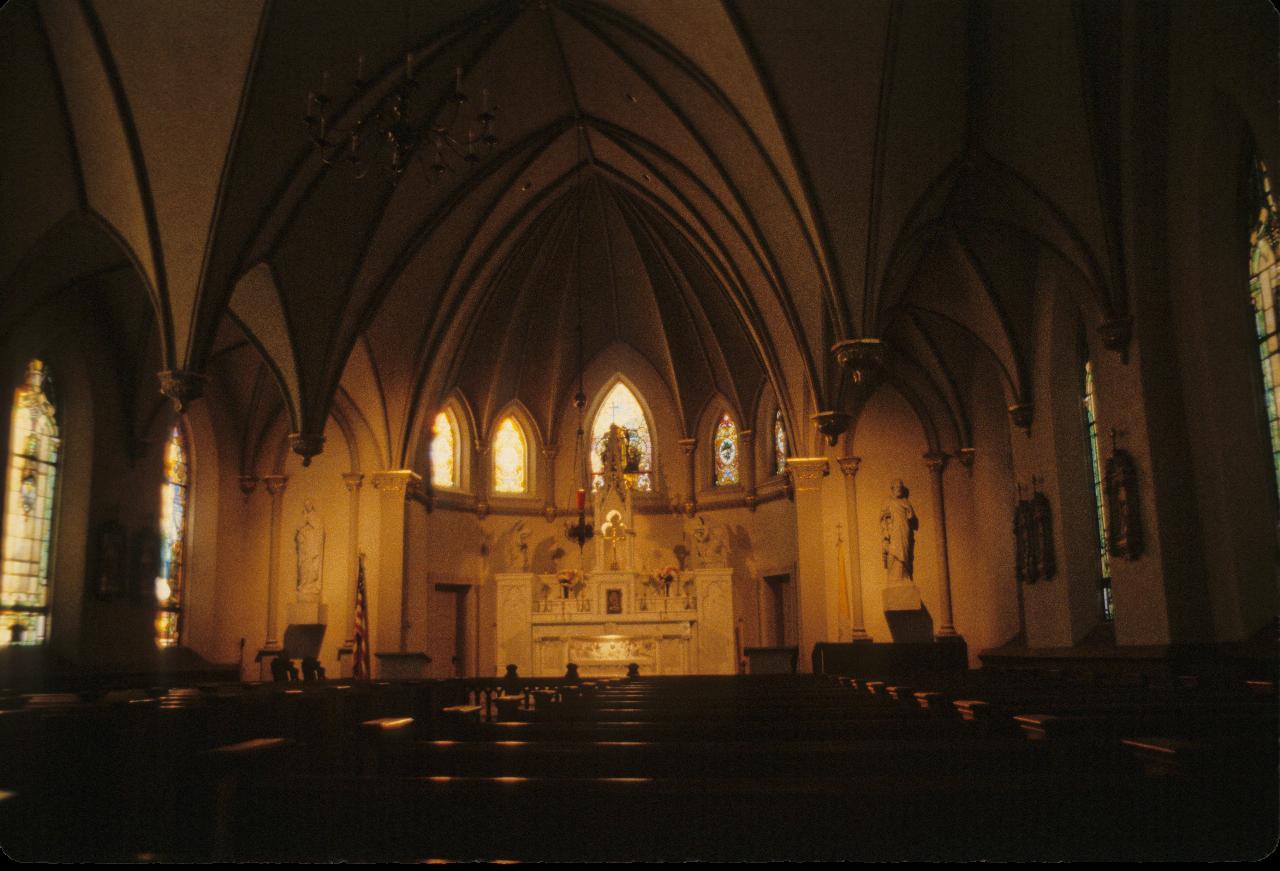
St. Peter's Catholic Church
is on the National Register of Historic Places. It is the only church
to have escaped destruction during the Civil War.
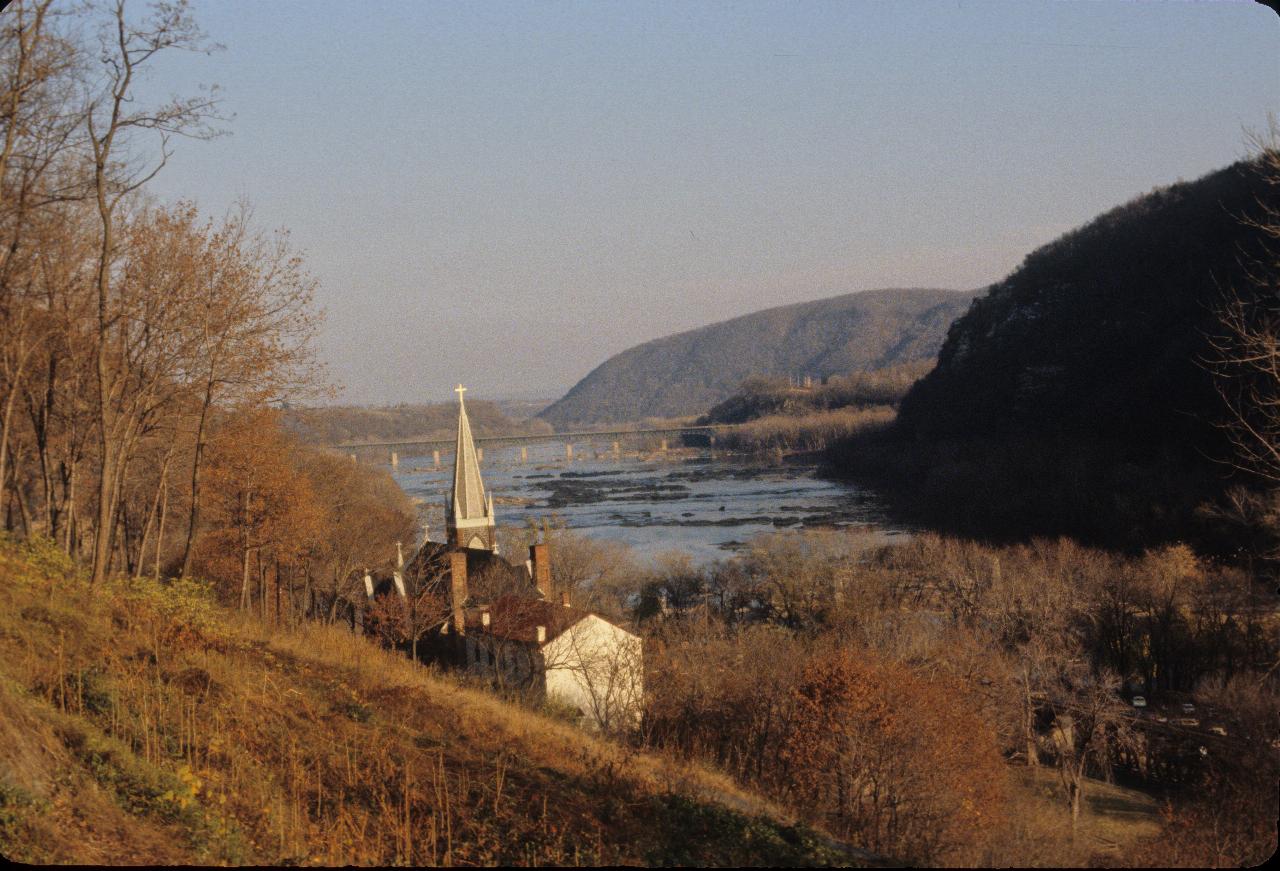
The view from Jefferson Rock over Harper's Ferry down the Potomac River and one
of the new road bridges which bypassed the town. The Potomac flows in from the left,
the Shenandoah from the right. The rock is named after Thomas Jefferson who
visited on October 25, 1783. He viewed "the passage of the Potomac through thei
Blue Ridge" from a rock which is now named for him. This stop took place
as Jefferson was traveling to Philadelphia and passed through Harpers Ferry
with his daughter Patsy. Jefferson called the site "perhaps one of the most
stupendous scenes in nature."
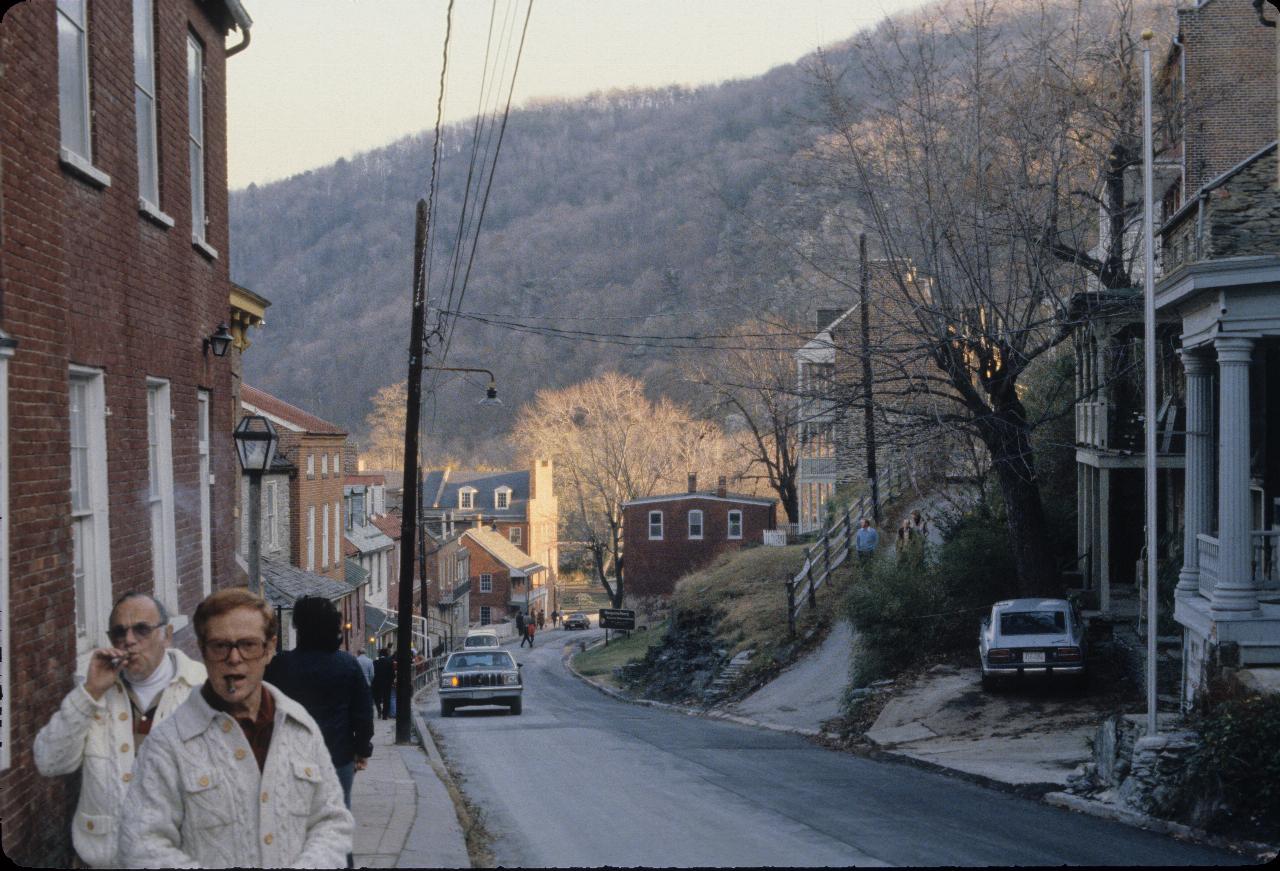
This is High Street, Harpers Ferry - not too surprising as it goes up the hill!
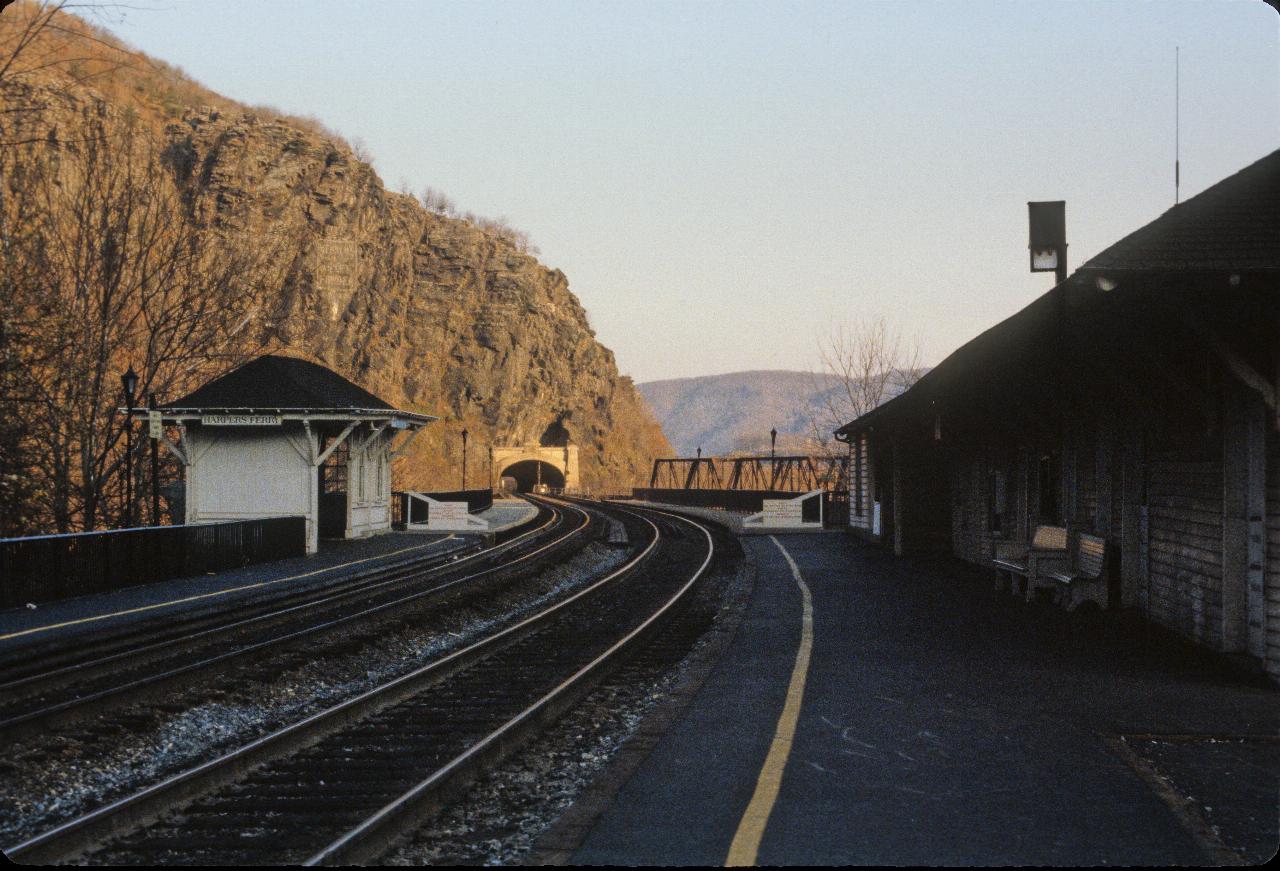
The Harpers Ferry train station. The left track is a Maryland commuter rail track,
with the right track used for freight and Amtrak passenger service.
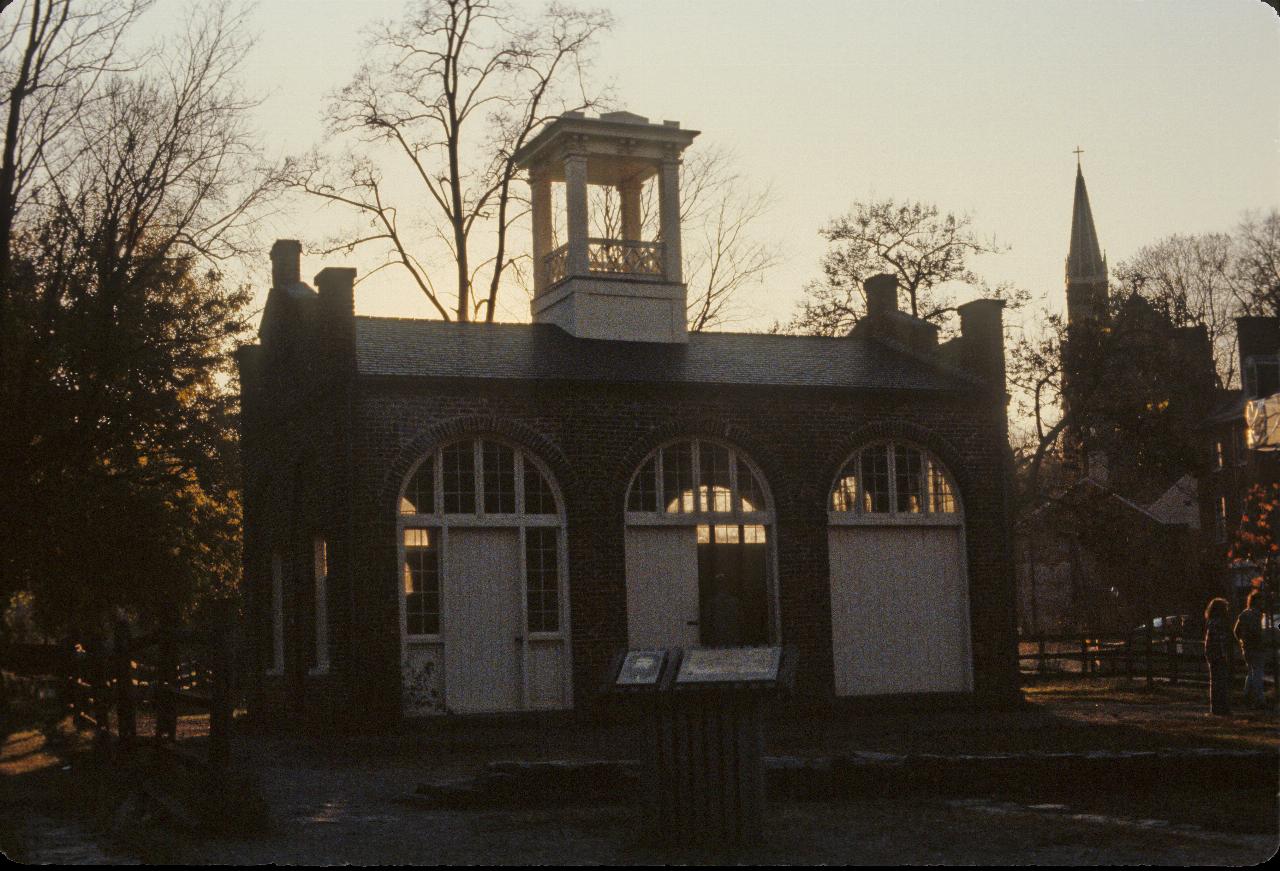
This is where John Brown and his group took cover when the army came in to
take back the town. He was captured from here.